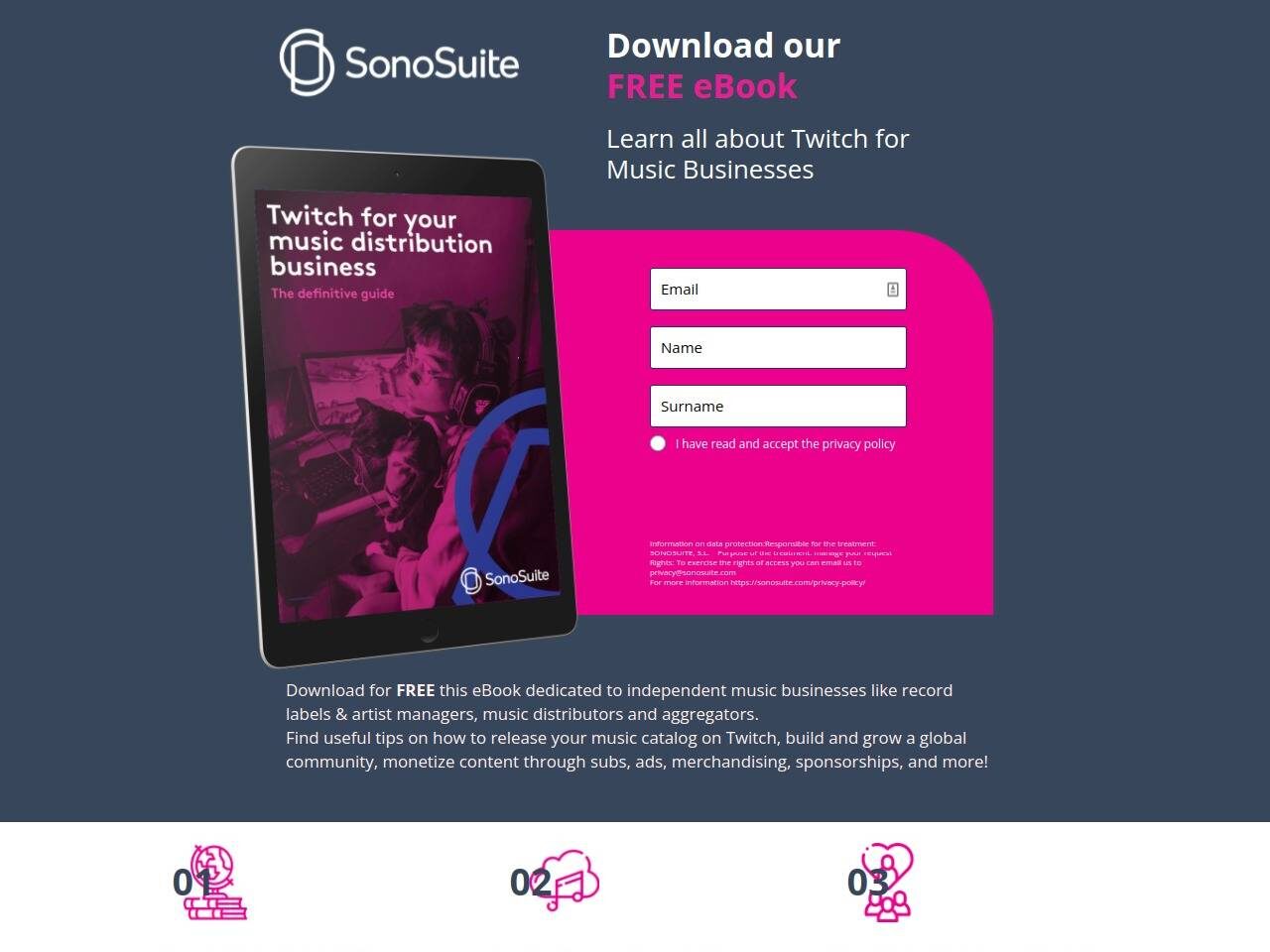To distribute music independently, create accounts on music platforms, promote on social media, and connect with fans. In today’s digital age, independent musicians have the opportunity to reach a global audience by distributing their music online.
By leveraging platforms like Spotify, Apple Music, and SoundCloud, artists can distribute their music independently and retain control over their creative work. Additionally, building a strong presence on social media, engaging with fans, and collaborating with influencers can help generate buzz around the music release.
With the right strategy in place, independent artists can build a loyal fan base and establish a successful music career without the need for a traditional record label. Let’s explore the full guide on how to effectively distribute music independently in the competitive music industry landscape.

Credit: www.avid.com
Building Your Brand As An Independent Musician
Building Your Brand as an Independent Musician is crucial for standing out in a crowded industry.
Identifying Your Unique Selling Point
Your unique selling point is what sets you apart from other musicians.
- Reflect on what makes your music different and interesting to your audience.
- Consider your strengths and what you can offer that no one else can.
Creating A Compelling Brand Story
Crafting a compelling brand story helps connect with your audience on a deeper level.
- Share your journey, experiences, and inspiration behind your music.
- Show authenticity and vulnerability in your storytelling.

Credit: www.marketingevolution.com
Understanding The Basics Of Music Distribution
Music distribution is essential for independent artists to reach their audiences. To dive into this process, understanding the basics of music distribution is crucial for success.
The Role Of Music Distributors
Music distributors act as intermediaries between artists and online platforms.
They handle the delivery of music to various streaming services and digital stores.
Distributors also assist in marketing and promotion efforts to maximize visibility.
Key Terms And Concepts In Music Distribution
- Metadata: Information like song title, artist name, and album details attached to music files.
- Royalties: Payments artists receive for each stream or download of their music.
- ISRC Codes: Unique codes assigned to each track for identification purposes.
- Streaming Platforms: Services like Spotify, Apple Music, and Amazon Music where music is streamed.
Choosing The Right Distribution Channel
When it comes to independent music distribution, choosing the right distribution channel is crucial. Your music distribution channel can significantly impact the reach and success of your music. Therefore, carefully considering your options and understanding the pros and cons of each distribution channel is essential for independent musicians.
Digital Distribution Platforms
Digital distribution platforms offer independent artists an efficient way to reach a global audience without the need for physical products. Digital distribution platforms such as Spotify, Apple Music, and Amazon Music enable musicians to distribute their music to major streaming services and online stores. They often provide comprehensive analytics and tools to help artists monitor their music’s performance and audience engagement.
Physical Distribution Options
For independent musicians who want to offer their music in physical formats, physical distribution options like CDs, vinyl, and merchandising are still relevant. These options allow fans to have a tangible connection with the artist’s music and also provide opportunities for selling merchandise at live events. Physical distribution requires coordination with pressing plants and fulfillment services, but it can be a rewarding way to offer a unique and personalized experience to fans.
Optimizing Your Music For Distribution
Looking to distribute your music independently? Optimizing your tracks for distribution is crucial for success. Ensure your music is easily accessible across various streaming platforms and online stores to reach a wider audience and maximize your earning potential.
Song Metadata And Tagging
Optimizing your music for distribution starts with ensuring that your songs have accurate and detailed metadata. Think of metadata as the information that accompanies your music and helps identify it, making it easier for listeners to discover your songs. When uploading your music to various platforms, you’ll be asked to provide metadata such as the song title, artist name, album name, and genre. It’s important to fill out this information accurately and consistently across all platforms to maximize your chances of being found.
- Title: Choose a title that accurately reflects the essence of your song and grabs the attention of potential listeners. Keep it concise, memorable, and avoid using generic titles that may get lost among countless other songs.
- Artist Name: Use your official artist name or band name to maintain a consistent brand identity across platforms. If you collaborate with other artists, make sure to credit them appropriately.
- Album Name: If you are releasing a full album or EP, give it a unique and descriptive title that gives listeners an idea of what to expect.
- Genre: Select the genre that best represents your music. Be specific rather than choosing broad genre categories.
- Additional Descriptors: Some platforms allow you to add extra information such as mood, tempo, or instrumentation. Take advantage of these options to provide more context and make it easier for listeners to discover your music.
Artwork And Packaging Considerations
 When it comes to distributing music, visuals play a vital role in capturing people’s attention. The artwork and packaging associated with your music are your first chance to impress potential listeners and convey the mood and style of your music. Here are some considerations to keep in mind:
When it comes to distributing music, visuals play a vital role in capturing people’s attention. The artwork and packaging associated with your music are your first chance to impress potential listeners and convey the mood and style of your music. Here are some considerations to keep in mind:
- Album Artwork: Create eye-catching and high-quality artwork that reflects your music and stands out in crowded music libraries. Avoid clutter and ensure that the text is legible at small sizes. Use consistent artwork across platforms to maintain a cohesive brand image.
- Song Artwork: For individual tracks, you may choose to have unique artwork. This can be an opportunity to create a visual theme or provide visual cues that enhance the listening experience.
- Consistency: Maintain a consistent visual identity across your entire music catalog to make it easier for fans to recognize your brand and associate it with your music.
- Metadata Embedding: Embed your artwork and other metadata directly into your music files using software like iTunes or dedicated tagging software. This ensures that your artwork travels with your music no matter where it is played.
- Quality and Resolution: Ensure that your artwork is of high resolution and displays well on various devices and platforms. Aim for a minimum resolution of 1400 x 1400 pixels for album artwork.
Promoting Your Music For Maximum Impact
When it comes to distributing music independently, promotion plays a crucial role in getting your music heard by a wider audience. To maximize the impact of your music promotion efforts, you need to craft an effective marketing plan and utilize social media and online channels strategically. In this section, we will explore these strategies in detail.
Crafting An Effective Marketing Plan
Creating a marketing plan for your music is essential to ensure you reach the right audience and generate maximum impact. Here are a few key steps to consider:
- Identify your target audience:
Understanding your target audience will help you tailor your marketing efforts and reach the people who are most likely to enjoy your music. Consider demographics, music preferences, and online behaviors when defining your target audience.
- Set clear goals:
Outline the specific objectives you want to achieve with your music promotion. Whether it’s increasing online streams, selling merchandise, or booking live gigs, having clear goals will help you stay focused and measure your success.
- Create a compelling brand:
Your brand is what sets you apart from other musicians. Develop a unique and memorable brand that reflects your music and persona. Consider your visual identity, logo, color scheme, and overall aesthetic when crafting your brand image.
- Develop a content strategy:
Content is a powerful tool for engaging with your audience. Plan a content strategy that includes regular releases of music, music videos, behind-the-scenes footage, blogs, and other forms of creative content to keep your audience engaged and excited.
- Utilize targeted advertising:
Investing in targeted online advertising can help you reach a wider audience and drive more traffic to your music. Platforms like Facebook Ads and Google AdWords allow you to target specific demographics, interests, and locations to ensure your ads are seen by the right people.
Utilizing Social Media And Online Channels
With the boom of social media and online platforms, musicians have unprecedented opportunities to connect with fans and promote their music. Here are some effective strategies to utilize:
- Create a strong online presence:
Set up profiles on major social media platforms like Facebook, Instagram, Twitter, and YouTube. Regularly share updates, engage with your audience, and post high-quality content to foster a loyal fan base.
- Engage with your followers:
Interacting with your followers is key to building a strong fan community. Respond to comments, messages, and mentions promptly. Organize Q&A sessions, live streams, and contests to make your fans feel valued and appreciated.
- Collaborate with influencers:
Partnering with influencers and music bloggers in your genre can expose your music to a wider audience. Reach out to influencers who align with your brand and ask if they would be interested in featuring your music on their platforms.
- Utilize music streaming platforms:
Platforms like Spotify, Apple Music, and SoundCloud offer great opportunities for independent artists to share their music. Create and optimize your profiles on these platforms, release your music, and promote it to your followers.
- Engage in cross-promotion:
Network with other musicians, bands, and music-related businesses to collaborate on promotional activities. This could include guest appearances on each other’s tracks, featuring each other in music videos, or recommending each other’s music to fans.

Credit: buzzsonic.com
Frequently Asked Questions Of How To Distribute Music Independently Full Guide
How Do Independent Artist Distribute Music?
Independent artists distribute music through digital music platforms like Spotify, Apple Music, and Amazon Music. They can also use distribution services like TuneCore and CD Baby to reach a wider audience.
How Can I Distribute My Music Myself?
To distribute your music yourself, use online platforms like DistroKid or TuneCore. Create accounts, upload your music, and they will distribute it to major streaming services.
How Do You Release Music Independently?
To release music independently, first choose a digital distributor like TuneCore or CD Baby. Then, prepare your music for distribution by providing metadata and cover art. Next, select the platforms you want to distribute to, such as Spotify or Apple Music.
Finally, set a release date and upload your music.
How Do I Publish My Music Independently?
To publish your music independently, follow these steps: 1. Record and produce your music professionally. 2. Choose a digital distribution platform, like TuneCore or CD Baby. 3. Create compelling artwork and metadata for your music. 4. Upload your music to the platform and select the stores and streaming services you want it to be available on.
5. Promote your music through social media, live performances, and networking.
Conclusion
Distributing music independently requires strategic planning, digital platforms, and effective marketing. By understanding the importance of building a strong online presence, optimizing your music for search engines, and engaging with your audience, you can effectively distribute your music independently. It is essential to stay updated and adapt to the ever-evolving digital landscape to reach a wider audience and achieve success in the music industry.